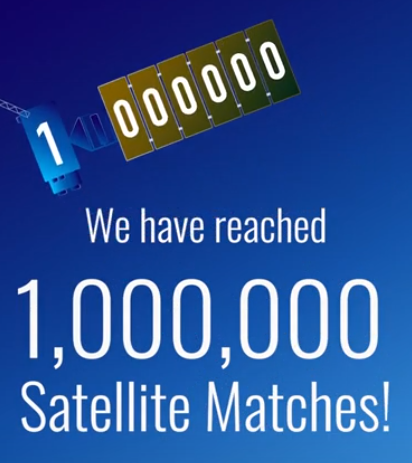GLOBAL News - NASA Goddard Space Flight Center
NASA GLOBE Reach Goal of One Million Satellite Matches

Thanks to the dedication of the GLOBE community, the goal of reaching 1,000,000 satellite matches has been achieved!
“GLOBE has reached yet another milestone....1 million satellite matches....what a productive community effort and thanks to all who contributed,” GLOBE Implementation Office (GIO) Director Dr. Tony Murphy said. “We know that the GLOBE community always reaches for the sky. This shows that they also count the clouds on the way! Thanks for all you do for GLOBE!”
Jessica Taylor, a physical scientist at NASA Langley Research Center (NASA LaRC), said, “We are excited that the GLOBE community has made so many observations, and that everyone is trying to match their observation time to when satellites are overhead. This helps provide a more complete picture of clouds in our atmosphere since the satellites give the perspective from space looking down, and GLOBE provides from the ground looking up. We can’t wait to see how many more observations the GLOBE community will continue to contribute. The long term record is incredibly important. Thank you to the GLOBE community for being such incredible cloud watchers!”
For more information on this achievement, click here.
Cloud Observations
Cloud observations submitted to The GLOBE Program, and to the program’s app, GLOBE Observer, are “pulled” by the NASA GLOBE Clouds team at NASA LaRC and matched to satellite data. The team receives over 200,000 citizen science sky observations each year. Dr. Bill Smith, an atmospheric scientist at NASA LaRC with the Satellite Cloud and Radiation Property Retrieval System (SatCORPS) team, described why this data is so important, “No single cloud observation method or system, whether it be human visual, or from an active or passive satellite, or ground-based sensor, is able to provide a complete and accurate depiction of cloud properties across the Earth under the many conditions that naturally occur.”
While satellites provide the “big picture” of what’s going on, they sometimes have trouble with the details. Certain cloud types, like thin wispy cirrus clouds, are sometimes hard to detect by certain satellites. Certain conditions like clouds in a snow-filled area make it difficult for satellites to distinguish what is a cloud and what is snow. Satellites can only capture a top-down view of our planet. Ground observations complement what the satellites cannot see.
When a GLOBE cloud observation is taken within 15 minutes of a satellite observation, then both points of view are matched. Some satellites are geostationary satellites, such as GOES, Himawari, and Meteosat. Others are polar orbit satellites, such as Aqua, Terra, and CALIPSO. The satellite matched data provides an augmented data set for research. When a match is made, the team sends a personalized email to participants with the matching satellite data. Approximately 4,000 emails are sent to the participants each month.
To learn more about the value of combining ground and space measurements, read the blog "Counting to a Million Matches."
To learn more about matching to satellites, click here.
News origin: GLOBE Implementation Office




